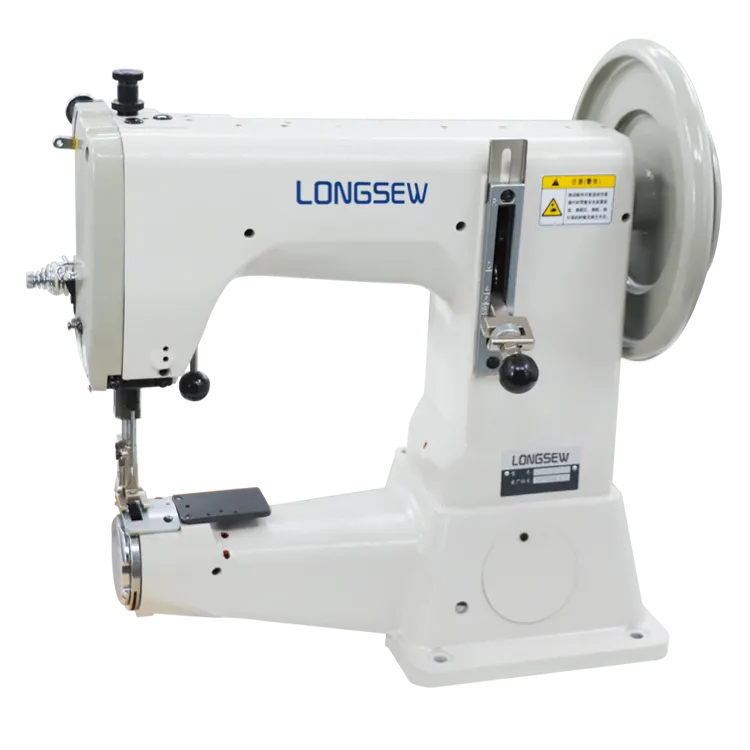upholstery sewing machine with walking foot
The Essential Guide to Upholstery Sewing Machines with Walking Feet
Upholstery sewing machines are indispensable tools for anyone delving into the art of furniture restoration or custom upholstery work. Among these machines, those equipped with walking feet stand out due to their unique functionality and design. Understanding their importance, features, and best practices can help you elevate your upholstery skills.
What is a Walking Foot?
A walking foot, often referred to as an even feed foot, is a specialized presser foot designed to feed multiple layers of fabric evenly through the sewing machine. Unlike standard presser feet, which only allow the bottom layer of fabric to move, a walking foot grips the fabric from both the top and bottom. This dual-action feeding system is particularly beneficial for thick and cumbersome materials commonly used in upholstery, such as leather, canvas, and heavy textiles.
Benefits of Using a Walking Foot for Upholstery
1. Even Fabric Feeding One of the primary advantages of using a walking foot is its ability to maintain an even feed between layers. This prevents the layers from shifting or puckering, ensuring that seams remain straight and even, which is crucial for aesthetics and durability in upholstery work.
2. Improved Stitch Quality With a walking foot, users can achieve more consistent stitch quality. The foot's unique design allows the machine to handle tricky fabrics, such as those with nap or pile, without causing distortion.
3. Versatility Walking feet are compatible with various types of materials beyond upholstery fabrics. Enthusiasts can use them for quilting and crafting projects, making the investment in a walking foot an economically sound decision for sewists who engage in diverse types of sewing.
4. Ease of Use Many modern upholstery sewing machines come with a built-in walking foot feature or allow for the attachment of a walking foot. This user-friendly design simplifies the process for beginners and speeds up the workflow for seasoned professionals.
Choosing the Right Upholstery Sewing Machine
When selecting an upholstery sewing machine with a walking foot, consider several factors
1. Motor Power Upholstery fabrics can be thick and challenging to sew through. A machine with a powerful motor will provide the necessary strength to stitch through multiple layers without strangling or jamming.
upholstery sewing machine with walking foot

2. Stitch Options Choose a machine that offers a variety of stitch options, including zigzag and decorative stitches. This versatility will allow for creative freedom when working on different upholstery projects.
3. Table Size A larger sewing table offers more space to maneuver fabrics, particularly when working on bulky items like sofas. Look for machines that can accommodate larger projects with ease.
4. Build Quality Opt for machines constructed from high-quality materials designed for durability. This investment will pay off in terms of longevity and reliability over time.
Best Practices for Upholstery Sewing
1. Prepare Your Materials Pre-wash your fabrics (if applicable) and ensure they're adequately cut before you start sewing. Proper preparation can save time and help avoid mistakes.
2. Use the Right Needles Always use needles suited for heavy fabrics. Universal or heavy-duty needles are ideal for most upholstery projects, while specialty needles may be required for leather or vinyl.
3. Adjust Tension Settings Take the time to adjust your sewing machine's tension settings appropriately. The tension should be balanced to avoid puckering or thread breakage.
4. Practice on Scrap Pieces Before you start on your actual upholstery project, practice on scraps of the same material. This helps you get a feel for the machine and adjust any settings before committing to the final piece.
5. Maintain Your Machine Regular maintenance ensures your upholstery sewing machine stays in optimal working condition. Keep it clean and lubricated, and make necessary adjustments as needed.
Conclusion
In conclusion, upholstery sewing machines with walking feet are essential for achieving professional-quality results in upholstery projects. Their unique feeding mechanism, combined with the right techniques and practices, allows sewists to work efficiently and creatively with various heavy fabrics. By investing in a quality machine, knowing how to select the right features, and following best practices, you can transform your upholstery work from simple to stunning. Whether you are a seasoned upholstery professional or a beginner, the right tools can pave the way for your creative vision to come to life.
-
Leather Sewing Machine: The Industrial Standard for Tough MaterialsNewsJul.18,2025
-
Sail Making Machine: Heavy-Duty Stitching for Industrial and Marine NeedsNewsJul.18,2025
-
Sling Sewing Machine: The Backbone of Heavy-Duty FabricationNewsJul.18,2025
-
Leather Sewing Machine: Precision for Heavy-Duty StitchingNewsJul.18,2025
-
Big Bag Sewing Machine: Powering the Future of Bulk PackagingNewsJul.18,2025
-
FIBC Sewing Machine: Essential Equipment for Bulk Bag ProductionNewsJul.18,2025
-
Heavy Duty Leather Sewing Machine: A Must-Have for Professional LeatherworkNewsMay.28,2025





























